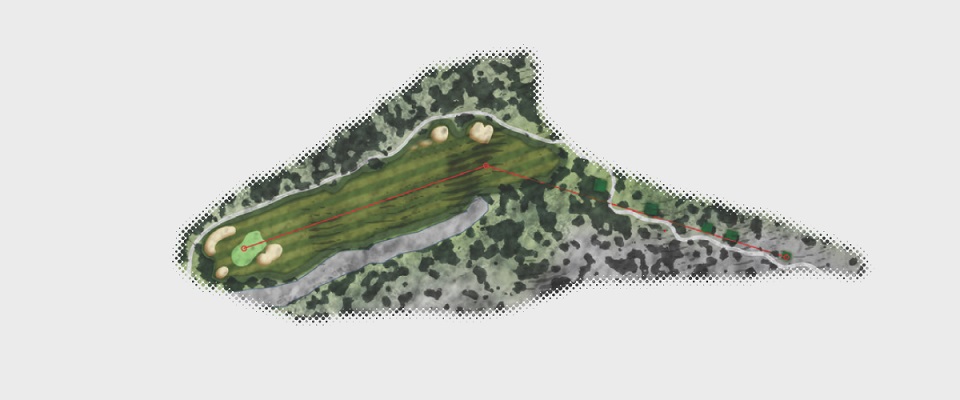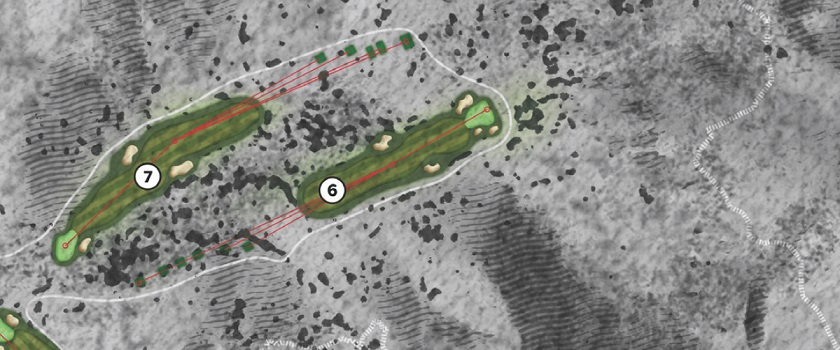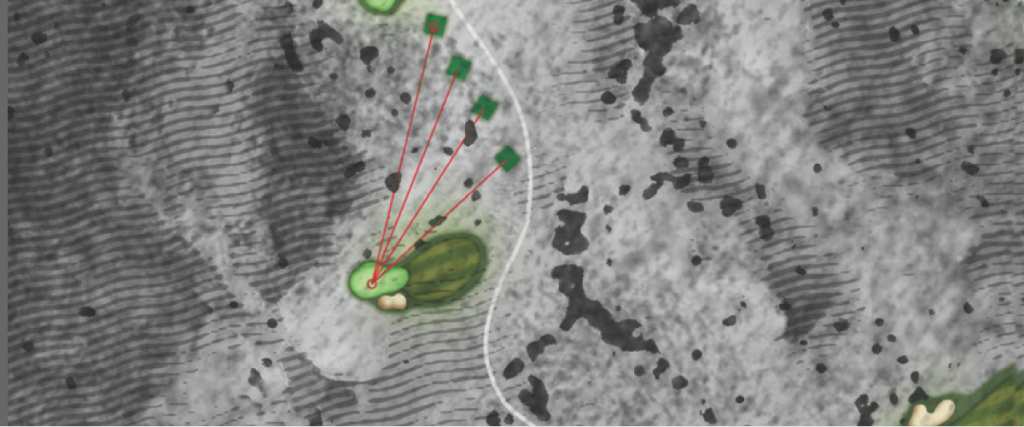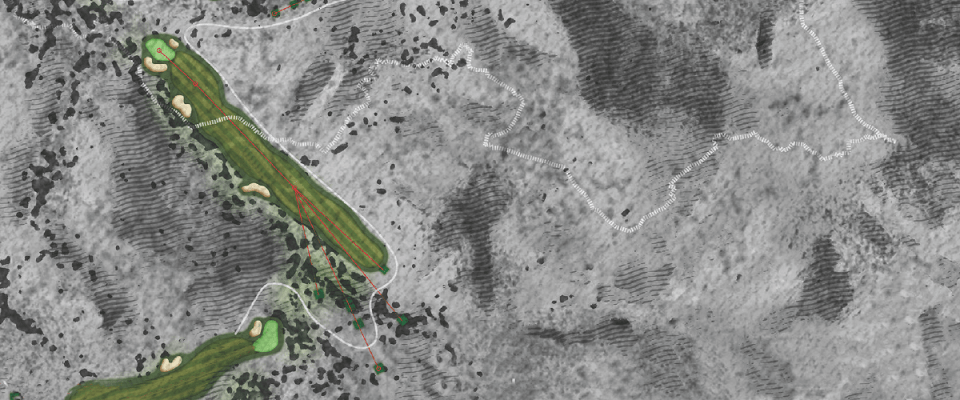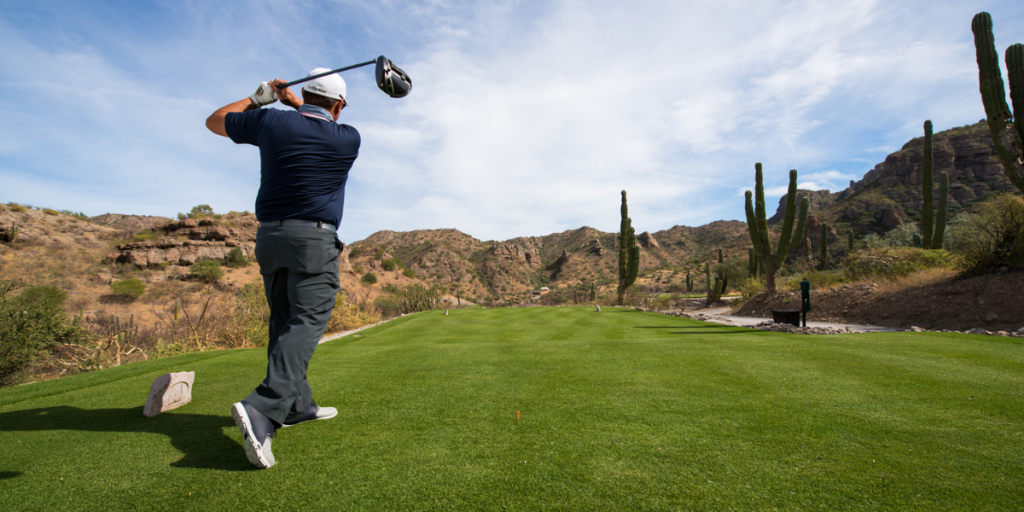


How to Fix a Slice: Pro Tips for Straighter Shots on the Golf Course
Volumes have been written about how to cure a slice, the bane of every duffer’s existence. It turns out that squaring up the clubface at impact is not as easy as it looks.
According to Golf Digest, “There’s a good reason why people who slice the ball want to fix it, because on the road you take to playing good golf, nowhere is there a slice. You can go from hitting a hook to playing good golf, but if you don’t learn how to stop hitting shots with an open clubface, you won’t get very far.”
The unfortunate reality is that a large majority of players—as high as 90%–struggle with a slice. It could be related to the grip. Or too steep a swing into the ball. Or a misunderstanding of how the arms and hands work in a proper release. These glaring flaws and other swing miscues typically produce high, weak shots to the right.
Learn to Hit as Draw to Stop Slicing
There are two schools of thought on making corrective changes to eliminate a slice: exaggerate the fix as much as possible, to really feel the change; or make changes incrementally and then make adjustments based on the results. A caveat: consult with your pro before transforming your swing. In golf, you want to avoid wandering down dark alleys of no return.
Before figuring out how, observe slow-motion video of the rotational action of the club head through the ball. It behaves like a swinging door on a fixed axis. Following the natural path of the swing, the club “turns over” from right to left, not from left to right. While most of the PGA Tour pros play a power fade, a draw is a better, more natural shot for most amateurs, especially for women and senior golfers. Why? Tee shots hit with right-to-left spin generally will roll further than those hit with left-to-right spin. Draws tend to roll more than fades because they come off the club with less backspin. They tumble forward instead of checking up.
Any hacker can slap a slice down the fairway. But turning it over from right-to-left? That’s the mark of a proficient player.
Here are several time-honored pro tips that will banish your slice—and help rekindle your enthusiasm for the game.
1. Stronger Grip
Many players use a grip that’s too weak–with the thumbs pointing straight down the handle. Strengthen your grip by turning your hands away from the target. Your palms should parallel each other. If lines were drawn from the ‘V’ at the base of your thumbs, they should point to the right side of your shirt collar. Take a secure but soft grip to allow the hands to release through impact.
2. Arms Close to Body
Keeping your underarms close to your body throughout the swing is the best way to stabilize the clubface. Visualize the golf swing as a circle. Natural curving will occur if your triceps (the muscle on the back of the upper arm) rest on your chest throughout the swing. Engaging the bigger muscles of your body will square the clubface–and add power.


3. Posture
Standing too upright can produce a slice path on the downswing. Bending forward from the hip joint will facilitate your ability to make a proper backswing. While posture varies because all golfers are built differently, allow for some tilt from the hips. In this way, the arms can relax and hang. You want to be balanced and athletic at address and throughout the swing.
4. Shoulder Line vs. Target Line
The club head spends so little on the target line that golfers who seek to do this will invariably produce a power-robbing slice. Go back to the concept that a golf swing is circular. When you make your backswing, your upper body rotates so that your shoulders are turned away from the target. If you were to allow your arms to swing down your shoulder line from the top of your backswing, you would produce a great path on the downswing. This move simulates an underhanded throwing motion, as if you were swinging a bucket of water with your right (trail) hand. One more thought: don’t rush the transition from backswing to downswing. A slower transition helps the arms drop into the proper “slot.”
An Adjusted Stance, a Relaxed Lead Arm, a Tilt from Hips
5. Foot Flare
Foot positions that are great for Tour players might not be appropriate for golfers with limited flexibility. A pro’s square back foot and flared forward foot will affect the swing path and produce a slice for golfers who aren’t as supple as they used to be. If you’re a chronic slicer, try the opposite. Flare your back foot, drop it back slightly, and square your forward foot. This will help increase your ability to rotate back and also slow down your body rotation on your forward swing, helping with path and the sequencing of body and arms.
6. Relax Lead Arm on Downswing
Width in a golf swing can add power, but if a player equates width with keeping the lead arm rigidly straight, problems can arise. The lead elbow must relax and fold on the forward swing. If the lead arm stays too stiff for too long on your forward swing, you’ll hold the club face open and slice the ball. Here’s a good drill: practice swings with your hands split apart. This will almost force your lead arm to relax and fold on your forward swing, helping to deliver a square face at impact.


7. Ball Position and Tilt
Do you hit most of your clubs fairly straight but slice your driver? It could be a ball position issue. First, your shoulders should be set differently with the driver than when the ball is on the ground. In addition, the ball should be teed up more forward in your stance, off the instep of your lead foot. Allow your shoulders to tilt back and away from the target. While your shoulders should be close to level with the irons, your lead shoulder should get higher and your back shoulder lower with the driver. This will allow your shoulder line to match your body lines. It will also correctly “shape” your swing path and give the club head time to get back to square at impact.






